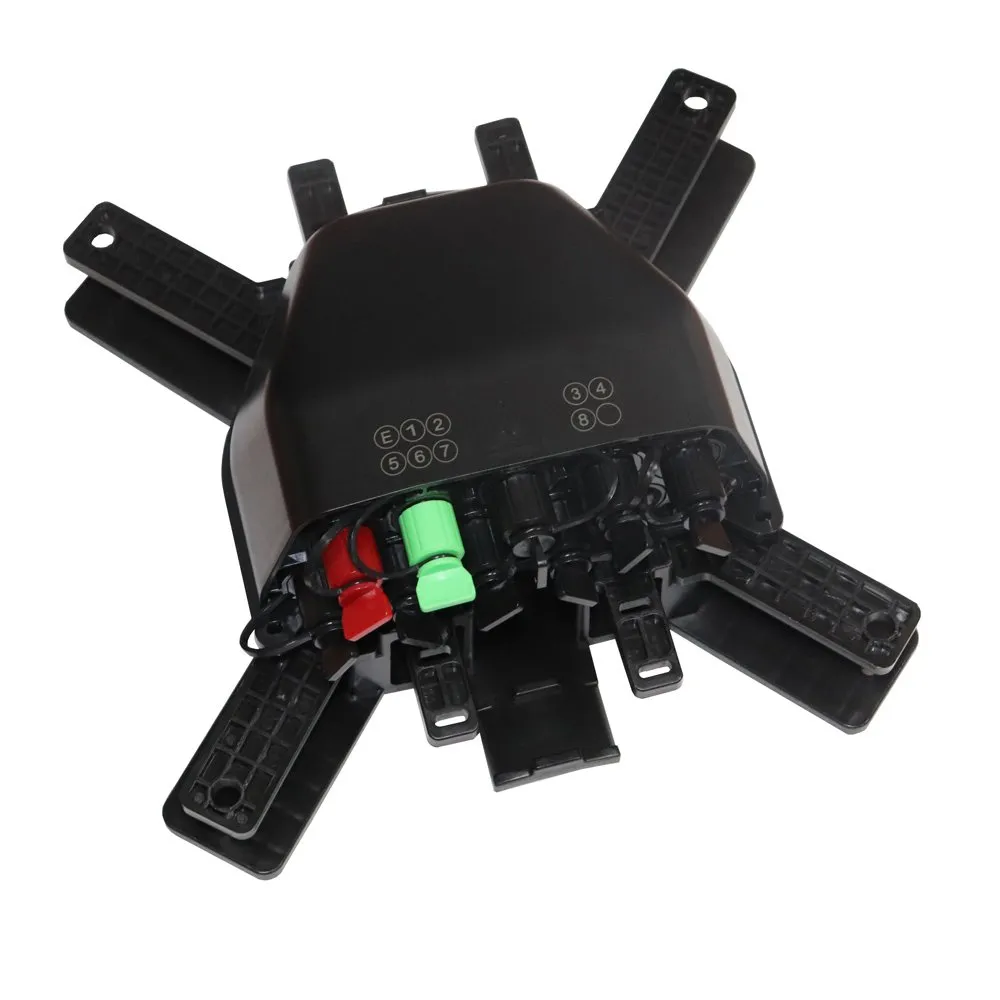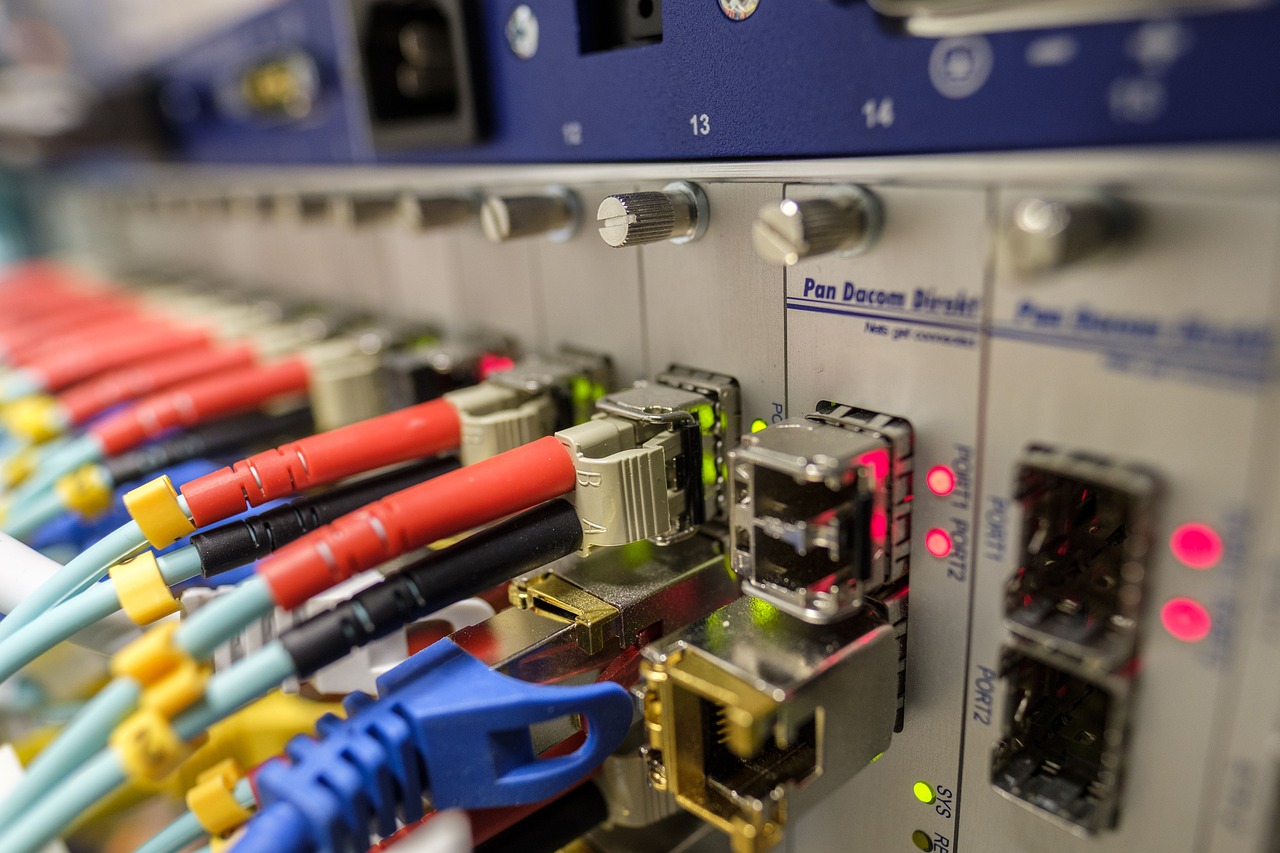5 Essential Features of IP68 Rated FTTX Terminal Boxes with 9 Ports for Non-Open Pre-Connectorized Fiber Access

In the world of fiber optic technology, IP68 and FTTX play crucial roles in ensuring reliable and durable connectivity. But what exactly do these terms mean, and how do they impact our daily internet usage?
What Does IP68 Mean?
When we talk about IP68, we're referring to a specific rating that indicates the level of protection a device or equipment has against dust and water. The "IP" stands for "Ingress Protection," and the "6" signifies complete protection against dust, while the "8" denotes the highest level of water resistance. Breaking down this rating helps us understand just how resilient devices with an IP68 rating are.
The Basics of FTTX Technology
On the other hand, FTTX encompasses a range of technologies that deliver communication services through optical fibers. From homes (FTTH) to businesses (FTTB) and even curb-side cabinets (FTTC), FTTX is the backbone of modern internet connectivity. Understanding how FTTX powers our internet sheds light on its significance in our digital lives.
Understanding the Durability of IP68 Terminal Boxes
In the realm of fiber optic technology, IP68 terminal boxes stand out as beacons of durability and resilience, designed to withstand even the harshest environmental conditions. Let's delve into the key features that make these terminal boxes a vital component in ensuring reliable fiber connectivity.
IP68: Built to Last in Any Weather
The robust nature of IP68 terminal boxes makes them ideal for deployment in diverse weather conditions. Whether it's scorching heat, heavy rain, or freezing temperatures, these terminal boxes are engineered to endure it all. The weather resistance of IP68 terminal boxes is a game-changer, providing peace of mind knowing that critical fiber connections remain safeguarded against the elements.
Why Weather Resistance Matters
The significance of weather resistance cannot be overstated when it comes to maintaining uninterrupted fiber connectivity. By withstanding extreme weather events, IP68 terminal boxes ensure that vital communication links remain operational, even during adverse conditions. This reliability is especially crucial in remote or outdoor installations where exposure to harsh weather is inevitable.
Keeping Your Connections Safe and Dry
One of the defining attributes of IP68 terminal boxes is their exceptional protection against dust and water ingress. This level of defense is paramount in safeguarding delicate fiber connections from environmental contaminants that could compromise their integrity. The ability to keep connections safe and dry underscores the reliability and longevity of IP68 terminal boxes in sustaining high-quality fiber networks.
The Importance of Dust and Water Resistance
The emphasis on dust and water resistance underscores the commitment to maintaining optimal performance and longevity for fiber optic infrastructure. By effectively sealing out dust particles and preventing water intrusion, IP68 terminal boxes ensure that fiber connections remain pristine and free from any potential disruptions caused by environmental factors.
Exploring the 9 Ports of FTTX Terminal Boxes
When it comes to FTTX terminal boxes, the inclusion of 9 ports serves a pivotal role in enhancing Fiber Access capabilities. Let's delve into the significance of this feature and understand how it contributes to the efficiency and flexibility of fiber optic networks.
Why 9 Ports?
The presence of 9 ports in FTTX terminal boxes offers unparalleled flexibility in managing fiber connections. With multiple ports available, network operators can effortlessly accommodate various connectivity requirements, whether it involves distributing signals to different locations or facilitating intricate network architectures. The versatility provided by 9 ports ensures that FTTX terminal boxes can adapt to evolving connectivity needs without requiring extensive modifications or upgrades.
Flexibility in Fiber Access
The abundance of ports not only caters to current demands but also anticipates future expansion and scalability. This flexibility is invaluable in scenarios where additional connections need to be established, enabling seamless integration without disrupting existing infrastructure. By providing a scalable solution for Fiber Access, 9-port FTTX terminal boxes empower network administrators to efficiently manage network growth and optimize resource utilization.
The Magic of Non-Open Pre-Connectorized Access
Innovative non-open pre-connectorized access further elevates the functionality of FTTX terminal boxes, revolutionizing the process of fiber installation and deployment.
Simplifying Fiber Installation
Non-open pre-connectorized access streamlines the installation process by eliminating the need for on-site connectorization, reducing deployment time and complexity. This approach simplifies the tasks associated with connecting fibers, minimizing potential errors and ensuring consistent performance across all connections. The magic lies in its ability to expedite installation while upholding stringent quality standards, ultimately contributing to more efficient and reliable Fiber Access networks.
The Convenience of FastConnect in Fiber Access
In the realm of fiber optic technology, FastConnect stands as a revolutionary advancement that significantly enhances the efficiency and reliability of fiber connections.
FastConnect: A Game Changer
The introduction of FastConnect has transformed the landscape of fiber installation and connectivity, making it a game changer in the industry. By incorporating innovative engineering principles, FastConnect simplifies and expedites the process of establishing fiber connections, setting new benchmarks for speed and ease of deployment. This cutting-edge technology streamlines intricate tasks involved in fiber termination, enabling network operators to achieve seamless and high-performance connections with remarkable efficiency.
Making Fiber Connections Faster and Easier
With FastConnect, the traditional complexities associated with fiber termination are minimized, allowing for swift and hassle-free establishment of connections. This not only accelerates deployment timelines but also reduces the margin for error, ensuring consistent performance across all connections. The convenience offered by FastConnect empowers technicians to accomplish more within shorter timeframes, ultimately contributing to enhanced productivity and operational effectiveness.
The Benefits of Quick and Reliable Connections
The implementation of FastConnect brings forth a multitude of benefits that extend beyond just expediting connection processes. Its ability to deliver quick and reliable connections plays a pivotal role in optimizing network deployment strategies.
How FastConnect Enhances Network Deployment
By facilitating rapid and dependable connections, FastConnect significantly streamlines network deployment efforts. This translates into reduced installation times, enabling network administrators to swiftly expand connectivity reach while maintaining superior performance standards. The seamless integration of fibers through FastConnect not only accelerates deployment but also ensures that networks are equipped to meet evolving demands with agility and resilience.
Enhanced speed
Streamlined deployment
Consistent performance
The Role of Terminal Boxes in Fiber Access Networks
Beyond merely facilitating connections, Terminal Boxes play a pivotal role in enabling various types of fiber access configurations. These versatile components are instrumental in supporting a wide array of connectivity arrangements, ensuring the seamless operation and expansion of fiber optic networks.
Beyond Connection: The Importance of Terminal Boxes
Terminal Boxes serve as the backbone for establishing straight joint, branch, and pass-through connections within fiber access networks. Whether it's consolidating multiple fibers into a single output or distributing signals to different locations, these boxes provide the necessary infrastructure to accommodate diverse connectivity requirements. Their ability to facilitate different connection types underscores their significance in optimizing network layouts and ensuring efficient signal distribution.
Ensuring Long-Term Reliability with Robust Materials
The durability and performance of Terminal Boxes heavily rely on the quality of materials used in their design and construction. Robust materials such as high-grade plastics or corrosion-resistant metals are essential for withstanding environmental factors and maintaining operational integrity over extended periods. The choice of materials significantly influences the longevity and reliability of Terminal Boxes, making it imperative to prioritize quality and resilience in their composition.
Why Material Matters in Terminal Box Design
The selection of materials directly impacts the overall effectiveness and longevity of Terminal Boxes within fiber access networks. By utilizing durable and resilient materials, these boxes can endure harsh conditions while safeguarding delicate fiber connections from potential damage or degradation. Furthermore, robust materials contribute to minimizing maintenance requirements and enhancing the overall stability of fiber access infrastructure, ensuring consistent performance throughout their operational lifespan.
Final Thoughts on IP68 FTTX Terminal Boxes
Bringing It All Together
As we wrap up our exploration of IP68 rated FTTX terminal boxes with 9 ports for non-open pre-connectorized fiber access, it's essential to emphasize the significance of these features for users. The robust weather resistance, dust and water protection, 9-port flexibility, and innovative FastConnect technology collectively contribute to ensuring reliable and durable fiber connectivity. These features directly translate to enhanced network performance, minimized maintenance requirements, and long-term cost savings for users.
Why These Features Matter for You
The culmination of IP68 rating, 9-port design, and FastConnect technology ultimately translates into a seamless user experience. By prioritizing durability, flexibility, and efficiency in fiber access networks, these features empower users to establish and maintain high-quality connections with ease. Whether it's optimizing network deployment or future-proofing infrastructure, these essential features directly cater to the diverse needs of users across various industries.
Looking Ahead: The Future of Fiber Access
As technology continues to advance at a rapid pace, the future of fiber access holds promising innovations aimed at further enhancing connectivity capabilities. From advancements in material science for even greater durability to streamlined installation processes that maximize efficiency, the horizon is brimming with opportunities for elevating fiber access networks.
Innovations on the Horizon
Innovations on the horizon include:
Enhanced material technologies for unparalleled durability
Streamlined installation processes for increased efficiency
Integration of advanced security features for safeguarding connections
Expansion of port capacity to accommodate evolving connectivity demands
These upcoming innovations are poised to revolutionize the landscape of fiber access networks, setting new benchmarks for reliability, performance, and adaptability in an ever-evolving digital era.


